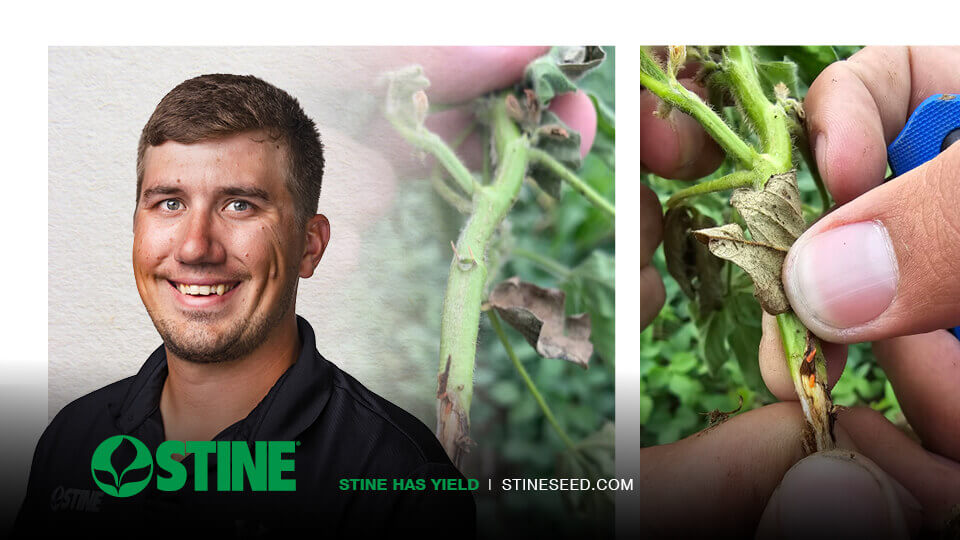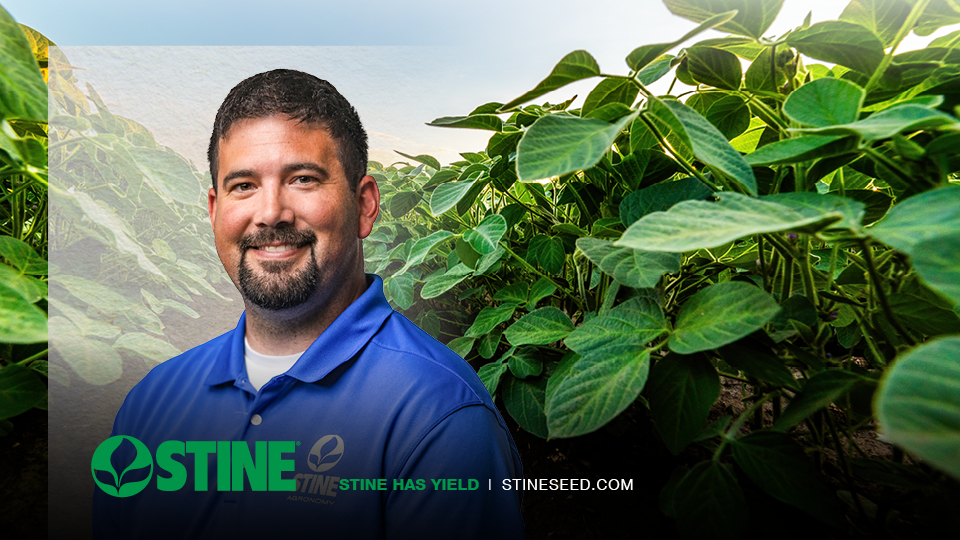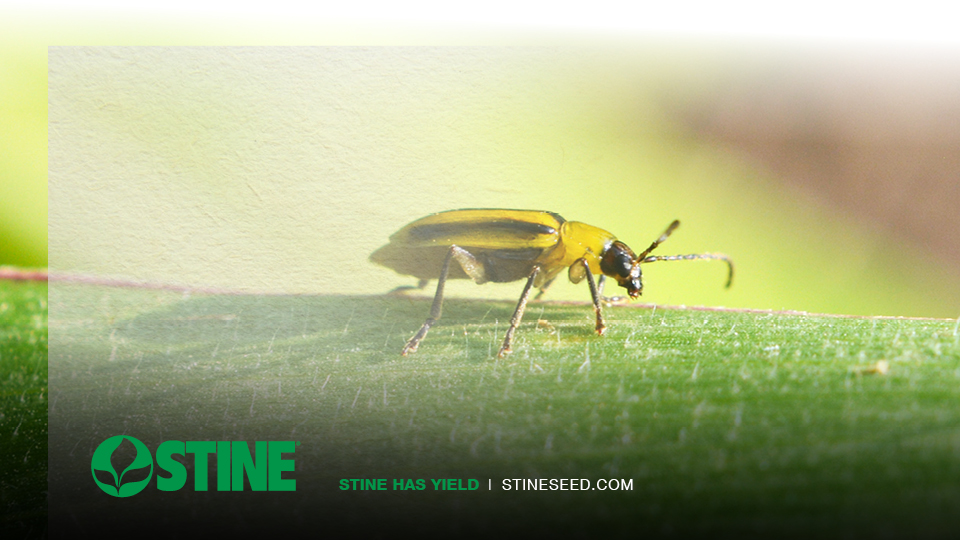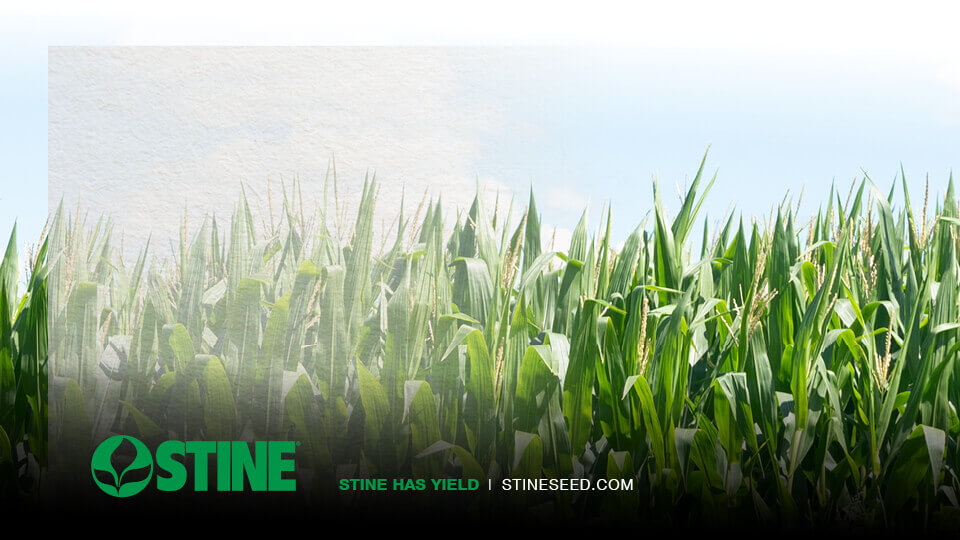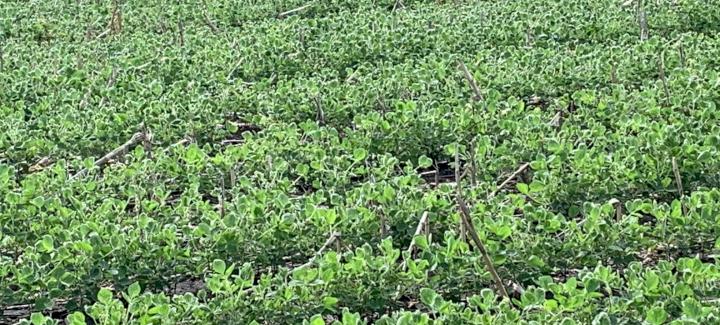
Last year, growers in the upper Midwest saw widespread damage to soybean acres related to elevated levels of dicamba. In June and July 2020, Stine® collected samples from 21 fields in Minnesota and Iowa and submitted 25 samples with suspected dicamba damage to the lab. Ninety-six percent of the samples tested positive for elevated dicamba levels. Now, as the label has been reapproved for application in 2021, growers who planted susceptible soybeans need to watch for early symptoms of dicamba crossover in their fields. Here’s what we know.
- Injury reports are coming in. Our agronomists are starting to hear from growers throughout the Midwest who suspect dicamba damage has occurred to their soybean fields. Iowa State University Extension experts report cupping related to herbicide injury is visible in many areas of the state. In a June 29 interview with Stine, ISU Extension Field Agronomist Meaghan Anderson confirmed that she has seen dicamba damage. “I can notice it in certain fields driving down the road. You can tell some fields are cupped up, which is very likely from (dicamba) movement.” She also notes that it’s still early in the season, so reports may continue to rise. “Typically, right after the Fourth of July, and about two to three weeks after most herbicide applications have wrapped up, people notice injury has occurred.”
- Reports vary on what may be causing the damage, but cupping is the tell-tale sign of dicamba damage. Some growers may hear reports that the damage they’re seeing could be attributed to genetics, environmental stressors or other herbicides, such as Group 27 and glufosinate herbicides or ammonium sulfate. Last year, some of those reports were dispelled by university experts. This year, however, Meaghan notes that the most likely injury being confused with dicamba is from HG15 products applied to soybeans. Those applications, she notes, may result in a drawstring effect or crinkling of leaf edges on the next leaf or two that develop after application. Meaghan debunks reports that environmental response, response to stress or response to other herbicides, such as Liberty® and ammonium sulfate in spray mixes, could cause this damage. “We very rarely would see this kind of damage prior to five years ago, so it’s pretty easy to dispel many of those myths regarding the sensitivity of certain soybeans to other factors that may result in cupping. I’ve never seen any other research (or factor) that causes cupped leaves that occur only in the middle of the summer and only in non-dicamba soybeans. It’s just simply not true.”
- Injury typically appears during the vegetative stages and on new plant growth. Growers may notice leaf drop or twisting at the stem in some instances, but the major indicator of dicamba injury is cupped leaves (as seen in the header image). Cupped leaves typically are found in the newer leaf growth and can be somewhat cream or discolored in appearance. Meaghan notes that detecting the injury can take some time. “It can take the development of two to three leaves before people notice cupping symptomology. Minor injury may appear as wrinkling of the leaf that’s very consistent across all three trifoliate leaflets of an individual leaf.” She adds that each trifoliate of the leaflet will be affected very similarly, almost mirroring one another.
According to Purdue Extension, growers may also notice an increased number of nodes on the plants, which unfortunately does not equate to higher yield. And with higher doses of dicamba exposure, plants may have changes in branching patterns, reduced flower numbers, delayed maturity, stunted growth and even death at the meristem. Stunted plants may also result in issues with canopy closure, making fields more prone to weed escapes. - Symptomology may not be isolated to the edges of fields. Last year, confirmed reports of dicamba damage were often noted throughout entire fields of those affected. Results indicated that damage could spread from fence to fence, not just to the edge of a susceptible field. In an article dated July 8, 2020, Dr. Bob Hartzler, a long-time professor of agronomy and extension weed specialist at Iowa State University, and his colleague Prashant Jha, an associate professor and weed specialist, noted, “ISUEO field agronomists and commercial agronomists in several areas of the state report nearly all non-dicamba resistant soybean(s) are showing symptoms characteristic of dicamba, and in many fields, the injury is fence row to fence row. This is not the type of injury we have observed in the past; it’s at a landscape level.”
Meaghan recommends growers scout their fields to look for any patterns that may indicate how the injury happened. Is it worse near a field edge? Is it worse in lower areas of the field? Is there a pattern to the symptomology? Looking into patterns may indicate where the damage is coming from, including neighboring fields. - Timing is important. According to the United States Environmental Protection Agency (EPA), it can take 7 to 21 days for dicamba symptoms to appear, depending on the ambient temperatures and growth stage of the crop. And research from the University of Minnesota Extension suggests that if soybeans are exposed to dicamba at an earlier vegetative stage, there is less yield loss. Comparatively speaking, if soybeans have reached the reproductive stage, there’s more chance of yield loss. Their results concluded that non-tolerant soybeans were most sensitive to dicamba exposure in the V7/R1 stage, early vegetative soybeans (V2) were least sensitive to dicamba exposure, and soybeans exposed at full flowering had higher yields than those of V7/R1 but less than those exposed at V2 (in this study). Soybeans planted before corn will be at a more susceptible growing stage when corn is ready for an herbicide pass. Many corn herbicides are dicamba-based products, putting soybeans at even more risk of dicamba damage.
- Certain factors may exacerbate the damage. Environmental stressors such as wind, lack of precipitation, high heat and humidity can prove problematic during peak application windows, which can all exacerbate the herbicide’s volatility. The type of application can also be a factor. Usually, if dicamba is applied to the soil as a pre-emerge or burndown, it has fully volatized by the time crops emerge, including neighboring crops that may be susceptible to its chemistry. As a post-emerge application, however, where neighboring crops are emerged and temperatures begin to increase, more movement can occur. Tank mixing can also be a factor. According to the University of Tennessee Institute of Agriculture, studies have shown that when certain dicamba products are tank mixed with glyphosate, volatility can increase. This may result from Roundup’s ability to lower the pH level. Lower pH can increase volatility, so experts recommend increasing your pH before tank mixing dicamba with glyphosate.
- Help is available to determine if your fields have dicamba damage. Local university experts and area agronomists can help determine if your fields have dicamba injury, and they can also assist you with taking and submitting samples to the lab for confirmation. The EPA notes it’s important to report any dicamba-related damage to your state Department of Agriculture and Pesticide Regulatory Agency. And, when able, it’s also best practice to notify your neighbors.
Meaghan stresses, “it’s extremely important that if growers think they know where the dicamba damage came from, that they make the person aware that there is an issue. There’s a natural inclination in a lot of cases to avoid the discussion because it’s a difficult conversation. But it’s important that we have those conversations, and we make people aware of it. If we don’t tell them, they may not ever know. We need to build awareness that this is happening and having good communication with neighbors is part of this.”
To learn more about detecting dicamba exposure in your soybeans, contact your local Stine agronomist or university extension specialist.
*Note: Part 2 of our Crop Progress Roundup was originally slated for this week’s edition but will now be published next Thursday.
Citations/Resources
Iowa State University Extension, June 2021, “Regional Update: June 21 to June 29, 2021,” https://crops.extension.iastate.edu/blog/rebecca-vittetoe/regional-update-june-21-june-29-2021
Iowa State University Extension, June 2020, “Impact, Armezon carryover injury observed in northwest Iowa,” https://crops.extension.iastate.edu/blog/bob-hartzler-paul-kassel/impact-armezon-carryover-injury-observed-northwest-iowa
Purdue Extension, May 2019, “Differentiating 2,4-D and Dicamba Injury on Soybeans,” https://ppp.purdue.edu/wp-content/uploads/2019/05/PPP-126.pdf
University of Minnesota Extension, 2018, “Symptoms of Dicamba Exposure in Soybean,” https://extension.umn.edu/herbicides/symptoms-dicamba-exposure-soybean
Iowa State University Extension and Outreach, July 2020, Dicamba 2020: What went wrong in Iowa?,” https://crops.extension.iastate.edu/blog/bob-hartzler-prashant-jha/dicamba-2020-what-wentwrong-iowa
United States Environmental Protection Agency, July 2017, “Compliance Advisory: Crop Damage Complaints Related to Dicamba Herbicides Raising Concerns” https://www.epa.gov/sites/production/files/2017-07/documents/fifra-dicambacomplianceadvisory-201708.pdf
University of Minnesota Extension, 2018, Soybean Yield Response to Dicamba Exposure, https://extension.umn.edu/herbicides/soybean-yield-response-dicamba-exposure#:~:text=Even%20very%20small%20concentrations%20of,60%20percent%20(Figure%202)
UTcrops News Blog, May 2019, Call of the Week: Dicamba Update, https://news.utcrops.com/2019/05/call-of-the-week-dicamba-update/
Iowa State University Extension and Outreach, July 2020, Dicamba: What does the research say?, https://crops.extension.iastate.edu/blog/bob-hartzler/dicamba-what-does-research-say
Progressive Farmer, June 2018, Diagnosing Dicamba Injury, https://www.dtnpf.com/agriculture/web/ag/crops/article/2018/06/28/distinguish-dicamba-injury-problems-3
Farm Progress, May 2019, Glyphosate may contribute to dicamba volatility, https://www.farmprogress.com/weeds/glyphosate-may-contribute-dicamba-volatility
Related Articles
-

The rise of soybean gall midge
July 2024 in Agronomy
-

Understanding soybean white mold
July 2024 in Agronomy
-

Time to scout for corn rootworm
June 2024 in Agronomy
-

Nitrogen management after an erratic spring planting season
June 2024 in Agronomy
